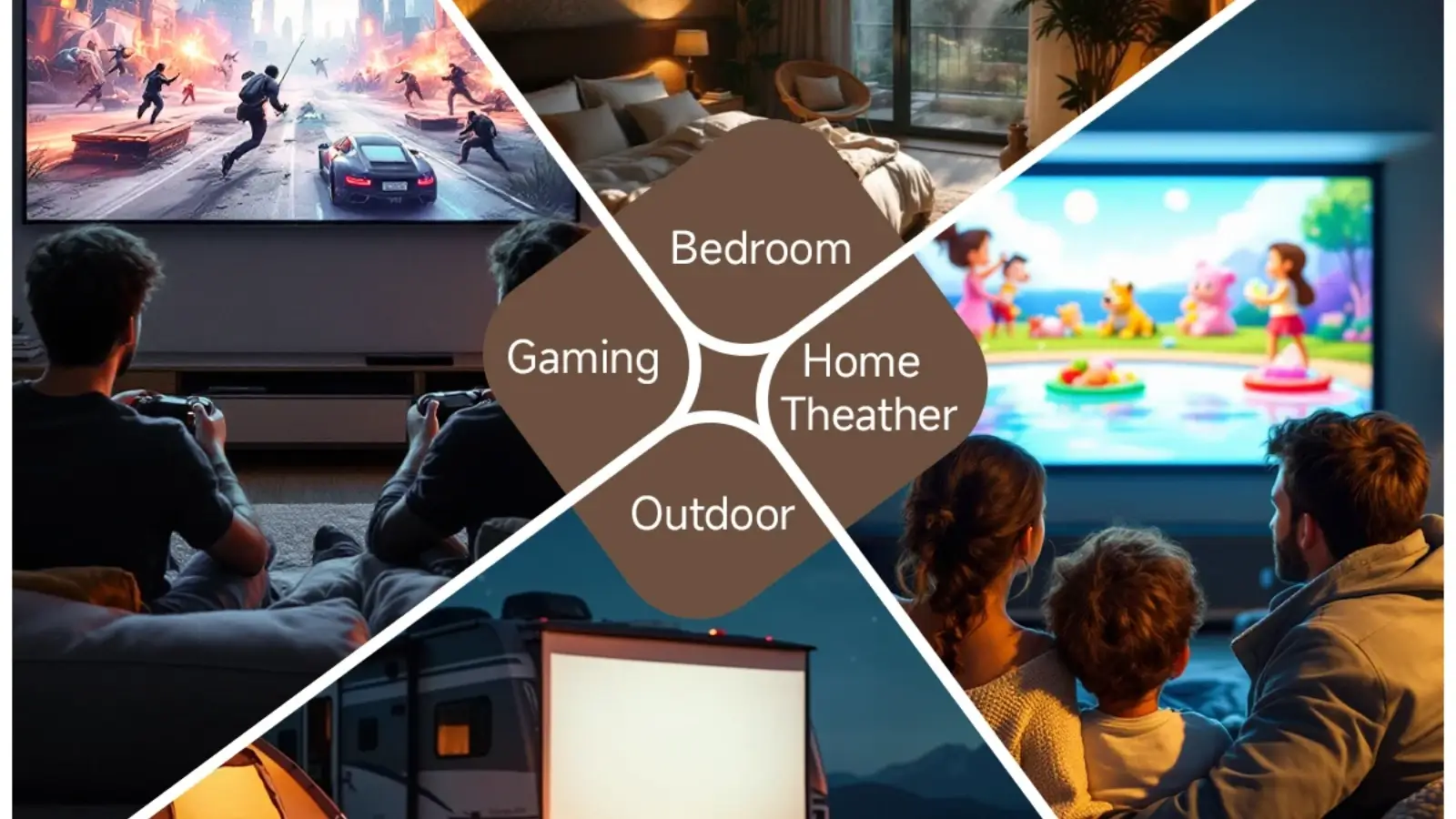


There’s something quietly magical about switching off the lights, grabbing a drink, and watching a film that fills your wall instead of your TV. The idea of having a home cinema used to sound expensive or complicated — something for enthusiasts with spare rooms.
That’s no longer the case. Today’s projectors are smaller, brighter, and far easier to live with. Swapping your television for a home cinema projector is one of the simplest ways to bring that cinematic atmosphere into your home. The Magcubic L018, for example, shows how compact design and real performance can finally coexist.
Still, with every online store shouting about “4K-ready” and “HDR brilliance,” it’s easy to lose track of what truly matters. This guide keeps it simple — what to look for, what to ignore, and how to find a projector that suits your room and your habits.
Not long ago, getting a decent projector meant compromise — faint images, whirring fans, clunky remotes.
The last few years have changed that.
Performance meets price. Brightness levels once limited to high-end models now appear in affordable ones.
Smarter systems. Android-based units can stream Netflix or YouTube without extra gear.
Compact design. New optics and auto-focus deliver crisp, 120-inch pictures even in smaller spaces.
After years of minor improvements, 2025 finally feels like the sweet spot — bright enough, quiet enough, smart enough.
If you’ve been waiting to build your own home theater, this might be the year to do it.
Specs don’t tell the whole story.
A true cinema projector doesn’t wow you on paper — it does it when the lights go down.
Imagine this: halfway through a dark scene, you can still make out the details in an actor’s jacket. The fan stays quiet, the colors hold steady, and dialogue sounds natural. That’s what separates a living-room gadget from a home theater projector — immersion without distraction.
To get there, focus on the essentials:
These traits matter far more than marketing slogans.
If you want to see how brands are tackling usability and performance, check the comparison charts on https://magcubic.com/; they show what the specs look like in real life.
When you finally start comparing models, it’s easy to drown in details.
Here’s what’s worth paying attention to — and what you can safely ignore.
Match it to your lighting. A small room that can darken easily only needs 600–800 ANSI lumens. Bright, sunlit rooms need 1,000 or more. More isn’t always better; balance is.
“Native 1080P” means true HD output. “4K supported” just means it can handle a 4K signal but scales it down. Unless you’re projecting over 120 inches, native 1080P is usually perfect.
Look for a solid contrast ratio (around 20,000:1) and color that looks natural, not oversaturated. User photos are often more revealing than brand numbers.
Android 11 or higher brings built-in apps and easy updates. Wi-Fi 6 improves streaming stability, while Bluetooth 5.2 connects to speakers instantly.
If you move your projector often, auto focus and quick keystone correction are worth every cent. They save setup time and frustration.
Good projectors travel easily and stay quiet — under 35 dB is ideal. Less noise equals better immersion.
Once you’ve checked these essentials, it’s time to think about how they fit your space.
Your home environment matters as much as any specification.
A projector that’s perfect in a studio apartment might struggle in a bright living room.
Standard models need around 3–4 meters for a 100-inch picture.
Short-throw projectors do it from just over a meter — ideal for apartments or bedrooms.
| Room Type | Ideal Screen | Brightness | Type |
|---|---|---|---|
| Small bedroom | 60–90″ | 600–800 ANSI | Short-throw |
| Mid-size living room | 100–120″ | 700–900 ANSI | Standard |
| Large theater room | 120–150+″ | 1,000+ ANSI | High-brightness |
The more windows or reflective surfaces, the brighter you’ll need.
Dark paint or curtains instantly improve image quality — no expensive add-ons required.
Living rooms need wide throws and brightness.
Bedrooms benefit from quiet fans and flexible stands.
For outdoor movie nights, portability and fast focus matter most.
When the projector suits your habits as much as your home, it stops feeling like tech and starts feeling like part of the room.
After testing a handful of models last year, one pattern stood out: the best projectors aren’t the loudest or the priciest — they’re the ones that make movie night easy. The Magcubic L018 is exactly that.
It focuses automatically, corrects its angles in seconds, and delivers a clean, bright picture that holds its sharpness on 100-inch walls. Its native 1080P resolution and 650 ANSI lumens perform better than the numbers suggest, especially in dim rooms.
Running Android 11 with Wi-Fi 6 and Bluetooth 5.2, it works like a streaming hub — not just a display. Add in its lightweight frame, a 180° adjustable stand, and barely-audible cooling fans, and you’ve got a setup that moves easily from living room to backyard.
If you’re after a dependable home cinema projector, the Magcubic L018 balances clarity, convenience, and value better than most in its range. It’s the kind of tech that quietly does its job — and keeps doing it.
Magcubic isn’t chasing the flashiest specs. The company builds around real users — those who want clear images, fast setup, and less fuss.
That’s why features like auto focus and quick keystone correction come standard, even on mid-tier models.
Its range runs from mini portables to 8K-ready projectors, all following one principle:
“Cinematic performance should fit your home, not the other way around.”
By combining solid software, thoughtful hardware, and local support networks, Magcubic has turned once-niche tech into something anyone can enjoy.
A projector isn’t just a screen; it’s a mood switch.
It turns walls into stories and ordinary nights into small events.
You don’t need a theater room or a massive budget — only the right mix of clarity, brightness, and design.
And when that mix clicks, even an apartment wall can feel like a cinema screen.
Because sometimes, the best seat in the theater is already in your living room.